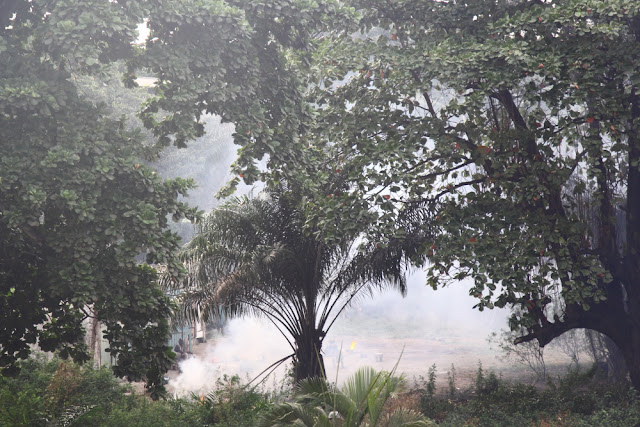 |
| autumn only lasts a week in April |
Here in Lagos, it is obvious that the gap is huge between the rich Oga, owner of a mansion on Banana Island or Ikoyi, and the man looking after his gate.
Ikoyi is in a course of modernisation. New condominiums are sprouting next to new hotels and office buildings. Redevelopment though rapid is often partial as some old worn-out colonial houses continue to stand. They have long ago been abandoned by their owners. Caretakers or squatters are occupying them not to leave the ground empty for fear someone might seize it and do something with it.
Hence, meet my neighbors, leaving at the back of a dilapidated two story building which has long lost its windows but is still uninhabited. Trees are providing shadow on the surrounding of a cleared area that is used as fire place and sitting area.
 |
| something's burning |
Comments
Post a Comment